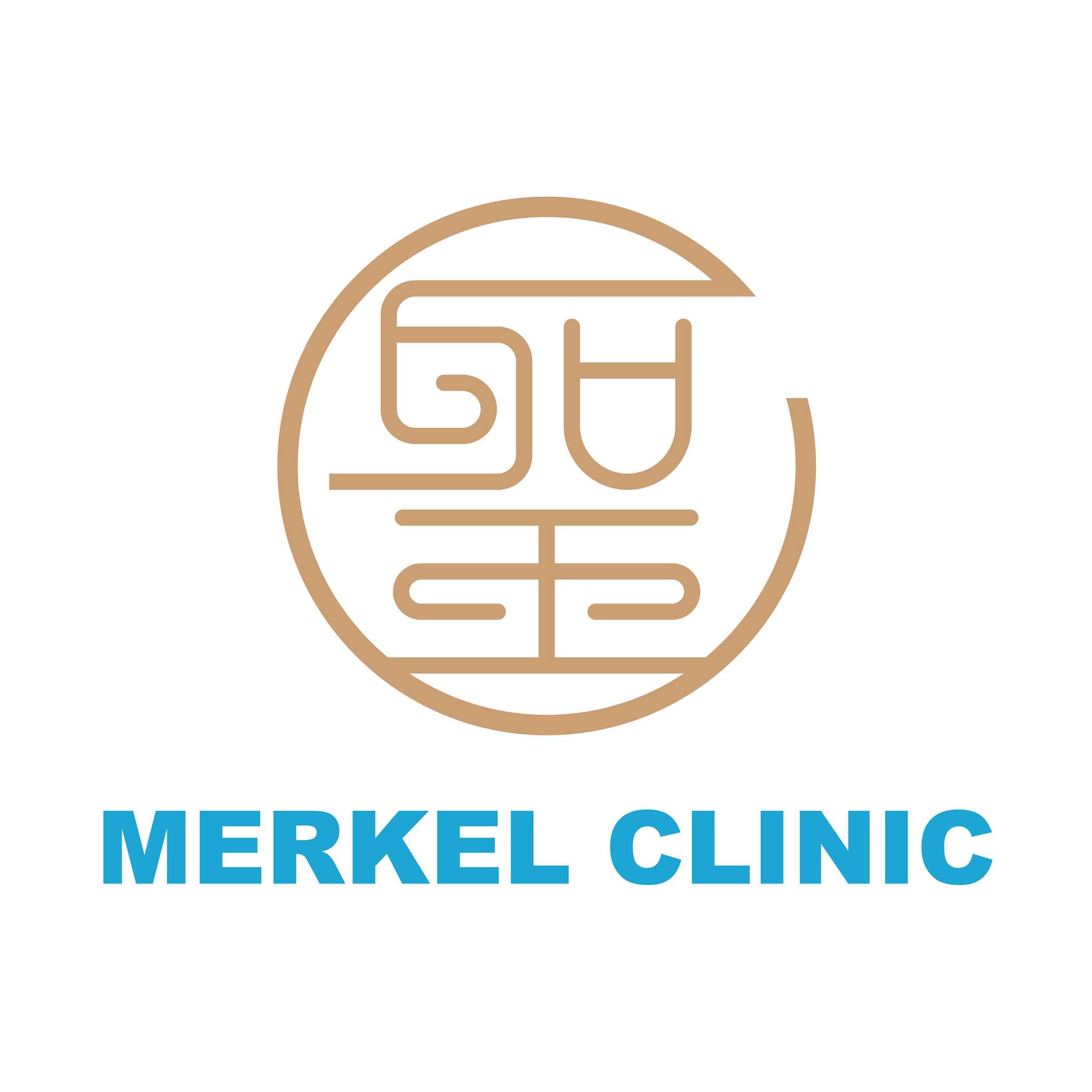Effective RA Stem Cell Therapy in Malaysia

Rheumatoid arthritis (RA) is a chronic autoimmune disease that primarily affects the joints, leading to pain, swelling, stiffness, and potentially severe joint damage. Traditional treatments often focus on managing symptoms and slowing disease progression, but they may not always provide complete relief or halt the underlying immune dysfunction. Stem cell therapy has emerged as a promising and innovative approach, leveraging the body's natural regenerative capabilities to address the root causes of RA. In Malaysia, this advanced treatment is gaining recognition, with a focus on its potential to modulate the immune system, reduce inflammation, and promote tissue repair. This blog post will delve into the effectiveness, procedures, costs, and other frequently asked questions about stem cell therapy for rheumatoid arthritis in Malaysia.
What is Rheumatoid Arthritis (RA)?
"Rheumatoid arthritis (RA) is a chronic autoimmune disease where the body's immune system mistakenly attacks its own tissues, primarily the lining of the joints, leading to inflammation, pain, stiffness, and eventual joint damage."
Rheumatoid arthritis is a systemic inflammatory disorder that can affect more than just your joints; it can also harm a wide variety of body systems, including the skin, eyes, lungs, heart, and blood vessels. Unlike osteoarthritis, which involves wear-and-tear damage to cartilage, RA affects the joint lining, causing a painful swelling that can result in bone erosion and joint deformity. The exact cause of RA is unknown, but it's believed to be a combination of genetic predisposition and environmental factors. Early diagnosis and intervention are crucial to prevent irreversible joint damage and improve long-term outcomes.
How does Stem Cell Therapy work for Rheumatoid Arthritis?
"Stem cell therapy for rheumatoid arthritis works by utilizing the anti-inflammatory and immunomodulatory properties of mesenchymal stem cells (MSCs) to regulate the overactive immune system, reduce inflammation, and promote the repair of damaged joint tissues."
Mesenchymal stem cells (MSCs) are a type of adult stem cell known for their ability to differentiate into various cell types, including cartilage, bone, and fat cells. More importantly, they possess powerful immunomodulatory and anti-inflammatory properties. When introduced into the body, MSCs can home in on inflamed and damaged areas. They then release various growth factors, cytokines, and other bioactive molecules that help to suppress the abnormal immune response characteristic of RA, reduce chronic inflammation, and stimulate the body's natural healing processes to repair damaged joint tissues. This multi-faceted approach aims not just to alleviate symptoms but to address the underlying disease mechanisms.
What types of stem cells are used for RA treatment in Malaysia?
"In Malaysia, the most common type of stem cells used for rheumatoid arthritis treatment are mesenchymal stem cells (MSCs), often derived from sources like umbilical cord tissue, adipose (fat) tissue, or bone marrow."
Mesenchymal stem cells (MSCs) are favored due to their strong immunomodulatory and regenerative capabilities, as well as their generally good safety profile.
- Umbilical Cord-Derived MSCs (UC-MSCs): These are often preferred because they are "naïve" (less exposed to environmental factors), are highly proliferative, and have low immunogenicity, meaning they are less likely to trigger an immune rejection when used from a donor (allogeneic). They are ethically sourced from discarded umbilical cords after childbirth.
- Adipose-Derived MSCs (AD-MSCs): These are obtained from a patient's own fat tissue through a minimally invasive liposuction procedure. They are easy to harvest in large quantities and are a good source of autologous (patient's own) stem cells, reducing the risk of immune rejection.
- Bone Marrow-Derived MSCs (BM-MSCs): These are harvested from the patient's bone marrow, typically from the hip bone. While effective, the collection procedure can be more uncomfortable than for adipose tissue.
The choice of stem cell source often depends on the individual patient's condition, the clinic's expertise, and the specific treatment protocol.
Is stem cell therapy for rheumatoid arthritis safe in Malaysia?
"Yes, stem cell therapy for rheumatoid arthritis in Malaysia is generally considered safe, particularly when performed by qualified medical professionals in Ministry of Health (MOH)-certified facilities using rigorously screened and processed stem cells."
Like any medical procedure, there are potential risks, but these are typically minimal with proper protocols. The use of autologous stem cells (from the patient's own body) largely eliminates the risk of immune rejection. When allogeneic stem cells (from a donor, such as umbilical cord-derived) are used, they are carefully screened for infectious diseases and undergo processing to reduce immunogenicity. Potential side effects are usually mild and temporary, such as:
- Transient fever
- Mild pain or swelling at the injection site
- Fatigue
- Constipation (rare)
Serious complications like infection or tumor formation are extremely rare, especially in regulated clinical settings. Patients should always choose reputable clinics with transparent safety protocols and experienced medical teams.
What are the benefits of stem cell therapy for RA?
"The benefits of stem cell therapy for rheumatoid arthritis include reduced inflammation and pain, improved joint function and mobility, potential disease modification by modulating the immune system, and a less invasive treatment option compared to surgery."
- Reduced Inflammation: Stem cells, particularly MSCs, possess potent anti-inflammatory properties that can significantly decrease systemic and localized inflammation associated with RA. This directly leads to a reduction in pain and swelling.
- Pain Relief: By reducing inflammation and promoting tissue repair, stem cell therapy can offer substantial and long-lasting pain relief for RA patients.
- Improved Joint Function and Mobility: As inflammation subsides and damaged tissues begin to regenerate, patients often experience increased range of motion, reduced stiffness, and improved overall joint function, leading to a better quality of life.
- Immune System Modulation: A key advantage of stem cell therapy for RA is its ability to regulate the overactive immune response, which is the root cause of the disease. This can help slow down disease progression.
- Tissue Repair and Regeneration: Stem cells can promote the repair of damaged cartilage and other joint tissues, potentially reversing some of the damage caused by RA.
- Minimally Invasive: Most stem cell treatments involve injections rather than extensive surgical procedures, leading to shorter recovery times and fewer risks.
- Reduced Medication Dependency: By addressing the underlying causes and providing long-term relief, stem cell therapy may reduce the need for long-term use of conventional RA medications, which often come with significant side effects.
What are the potential risks or side effects?
"While generally safe, potential risks of stem cell therapy for rheumatoid arthritis include mild and temporary side effects such as injection site pain or swelling, transient fever, or fatigue, with more serious complications like infection being rare."
- Injection Site Reactions: Similar to any injection, there can be temporary pain, bruising, or swelling at the site where the stem cells are administered.
- Transient Fever: Some patients might experience a low-grade fever shortly after the procedure.
- Fatigue: A feeling of tiredness or fatigue is occasionally reported.
- Infection: As with any procedure that breaks the skin barrier, there is a small risk of infection, though this is minimized by sterile techniques.
- Allergic Reaction: While rare, especially with autologous cells, an allergic reaction to components used in cell processing can occur.
- Theoretical Risks: There are theoretical concerns about unwanted cell differentiation or uncontrolled cell growth (tumor formation), but these are extremely rare in controlled clinical settings, particularly with adult mesenchymal stem cells. Rigorous screening and processing protocols are in place to mitigate such risks.
It's crucial to discuss all potential risks and benefits with your doctor and ensure the clinic adheres to strict safety standards.
How long does stem cell therapy take for RA in Malaysia?
"The stem cell therapy procedure for rheumatoid arthritis in Malaysia typically involves a few hours for cell collection and administration, with the entire treatment plan potentially spanning several weeks to months, including consultation, preparation, and follow-up."
The timeline varies depending on the type of stem cells used and the clinic's protocol:
- Consultation and Evaluation: This initial phase can take a few days to a week, involving medical history review, physical examination, and diagnostic tests (blood tests, imaging).
- Cell Collection: If using autologous stem cells (from your own body), the collection of bone marrow or adipose tissue is usually a short, outpatient procedure, often taking 30 minutes to 2 hours.
- Cell Processing: The collected cells are then sent to a specialized laboratory for processing and expansion, which can take several days to a few weeks, depending on the required cell count and specific lab procedures.
- Cell Administration: The administration of stem cells, usually via intravenous infusion or direct injection into affected joints, is a relatively quick procedure, typically lasting 30 minutes to an hour.
- Follow-up: Multiple follow-up sessions may be scheduled over several months to monitor progress and assess the effectiveness of the treatment. The full therapeutic effects may become noticeable over weeks to several months.
What is the cost of stem cell therapy for rheumatoid arthritis in Malaysia?
"The cost of stem cell therapy for rheumatoid arthritis in Malaysia typically ranges from RM 30,000 to RM 150,000 (approximately USD 6,300 to USD 31,500), varying based on the type of stem cells, disease severity, number of sessions, and clinic reputation."
This is a general estimate, and the actual price can fluctuate significantly. Several factors influence the cost:
- Type of Stem Cells Used: Autologous stem cells (harvested from the patient's own body) may be less expensive than allogeneic (donor-derived) stem cells, especially umbilical cord-derived MSCs which require specialized processing and sourcing.
- Severity of RA: More severe cases might require a higher number of cells or multiple treatment sessions, increasing the overall cost.
- Number of Sessions: Some treatment protocols involve a single administration, while others may recommend multiple sessions over a period to achieve optimal results.
- Clinic Reputation and Facilities: Established clinics with state-of-the-art facilities, advanced technology, and a team of highly experienced specialists may charge higher fees.
- Included Services: The total cost might include initial consultation, diagnostic tests, cell collection, processing, administration, and follow-up care. It's important to get a detailed breakdown of what's included in the price.
It's advisable to consult with several reputable clinics to compare pricing and understand the comprehensive treatment plan.
How long does it take to see results from stem cell therapy for RA?
"Patients undergoing stem cell therapy for rheumatoid arthritis may begin to notice improvements in symptoms like pain and stiffness within a few weeks to 1-3 months, with more significant and lasting benefits often becoming evident over 3 to 6 months."
The timeline for experiencing results can vary among individuals due to factors such as:
- Disease Severity: Patients with less advanced RA might respond more quickly than those with severe, long-standing disease.
- Individual Response: Everyone's body reacts differently to treatment; some individuals may be more responsive to stem cell therapy than others.
- Type and Dosage of Stem Cells: The source and quantity of stem cells administered can influence the speed and extent of improvement.
- Lifestyle and Adherence to Post-Treatment Care: Maintaining a healthy lifestyle and following post-treatment recommendations can enhance the therapeutic effects.
While some patients report rapid improvements, the full regenerative and immunomodulatory effects of stem cells typically take time to manifest as tissues heal and the immune system rebalances. Ongoing improvements can be observed for up to a year or more after the initial treatment.
Are there specific clinics in Malaysia that offer stem cell therapy for RA?
"Yes, Malaysia has several reputable medical centers and specialized clinics that offer stem cell therapy for rheumatoid arthritis, including Beverly Wilshire Medical Centre, Revine Clinic, and SpringHill Clinic, among others."
Malaysia is emerging as a popular destination for medical tourism, including regenerative medicine, due to its modern healthcare infrastructure, skilled professionals, and competitive pricing. When considering a clinic, it's essential to research their credentials, experience with RA patients, the type of stem cells they use, their safety protocols, and patient testimonials. Some clinics focus on specific types of stem cell therapies or conditions, so ensure they have expertise in treating rheumatoid arthritis. It is always recommended to verify their registration with the Ministry of Health Malaysia (MOH) and inquire about their quality control measures for stem cell processing.
Can stem cell therapy cure rheumatoid arthritis?
"No, stem cell therapy for rheumatoid arthritis is not considered a cure, but it can significantly improve symptoms, reduce disease activity, modulate the immune system, and promote tissue repair, offering long-term relief and enhancing quality of life."
Rheumatoid arthritis is a complex autoimmune disease, and currently, there is no definitive cure. However, stem cell therapy holds significant promise as a powerful treatment option that can bring about long-term remission, reduce reliance on conventional medications, and improve the patient's overall well-being. It aims to restore balance to the immune system and promote regeneration, rather than simply suppressing symptoms. Many patients experience substantial and sustained improvements in pain, inflammation, and joint function, which can be life-changing, even if the underlying autoimmune tendency remains. Continued research is ongoing to further understand and maximize the therapeutic potential of stem cells for RA.
What is the patient eligibility for stem cell therapy for RA?
"Patient eligibility for stem cell therapy for rheumatoid arthritis is determined by a comprehensive medical evaluation, typically for individuals with moderate to severe RA who have not responded adequately to conventional treatments, or those seeking alternative regenerative options."
Eligibility criteria usually include:
- Diagnosis of Rheumatoid Arthritis: A confirmed diagnosis of RA is essential.
- Disease Activity: Patients often have active or persistent symptoms despite standard therapies.
- Overall Health: Candidates should generally be in good health, without severe co-morbidities that could complicate the procedure or recovery.
- No Active Infections: Patients should not have any active infections.
- Realistic Expectations: Understanding that stem cell therapy is a treatment to improve symptoms and disease management, not a definitive cure, is important.
- Contraindications: Certain conditions, such as active cancer, severe heart or kidney disease, or pregnancy, may preclude a patient from being a candidate.
A thorough consultation with a stem cell specialist is crucial to determine if you are a suitable candidate and to tailor a personalized treatment plan.
How does stem cell therapy compare to traditional RA treatments?
"Stem cell therapy for rheumatoid arthritis offers a regenerative approach by modulating the immune system and repairing tissues, contrasting with traditional treatments that primarily focus on suppressing inflammation and managing symptoms with medications."
While traditional treatments are essential for managing RA, stem cell therapy offers a complementary or alternative approach, particularly for patients who don't respond well to conventional therapies or seek a more natural, regenerative solution.
What follow-up care is needed after stem cell therapy for RA?
"After stem cell therapy for rheumatoid arthritis, follow-up care typically involves regular consultations with the medical team to monitor progress, assess symptom improvement, and potentially perform further diagnostic tests to track disease activity and joint health."
This post-treatment phase is vital for optimizing outcomes and ensuring long-term success. Follow-up care may include:
- Clinical Assessments: Regular physical examinations to check joint mobility, pain levels, and swelling.
- Blood Tests: Monitoring inflammatory markers (e.g., ESR, CRP), autoantibodies (e.g., RF, anti-CCP), and overall immune function.
- Imaging Studies: X-rays, MRI, or ultrasound may be used periodically to assess changes in joint structure and integrity.
- Lifestyle Recommendations: Patients are often advised on maintaining a healthy lifestyle, including diet, exercise, and physical therapy, to support the regenerative process.
- Medication Adjustments: Your doctor may gradually adjust or reduce your conventional RA medications as your condition improves.
- Additional Sessions: In some cases, depending on the initial response and disease progression, additional stem cell sessions might be recommended.
The specific follow-up schedule and recommendations will be tailored to each individual patient by their treating physician.
Explore PlacidWay for solutions related to medical tourism, healthcare services, and other relevant offerings to find the right treatment options for your needs.


.png)




.jpg)









Share this listing